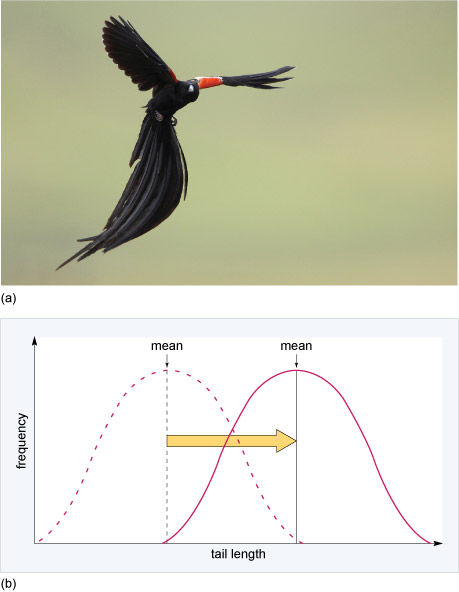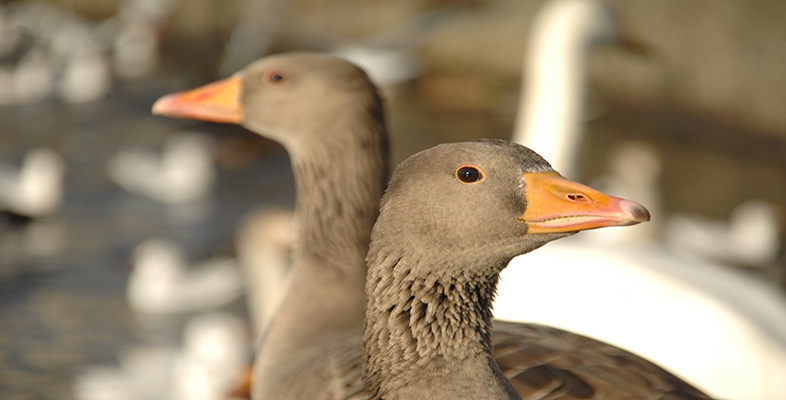3.1 Directional selection
Directional selection occurs when conditions favour individuals expressing one extreme of a phenotypic range, thereby shifting a population's frequency distribution for the phenotypic character in one direction or the other. For example, in long tailed widowbirds (Euplectes progne, Figure 13a) males with long tails have a reproductive advantage over males with shorter tails because females prefer to mate with males with long tails. Directional selection therefore favours long tails and may shift the distribution of the population so that tail length increases over time (Figure 13b).

If shorter tailed males were more successful in attracting and mating with females than long tailed males, in which direction would the mean tail length shift?
Tail length would shift to the left, that is, towards shorter tail length.
With respect to migration, studies have shown that under strong directional selection, populations can switch from sedentary to migratory or vice versa relatively quickly and that factors such as climate change could lead to the evolution of sedentariness in many bird populations that are currently migratory.
